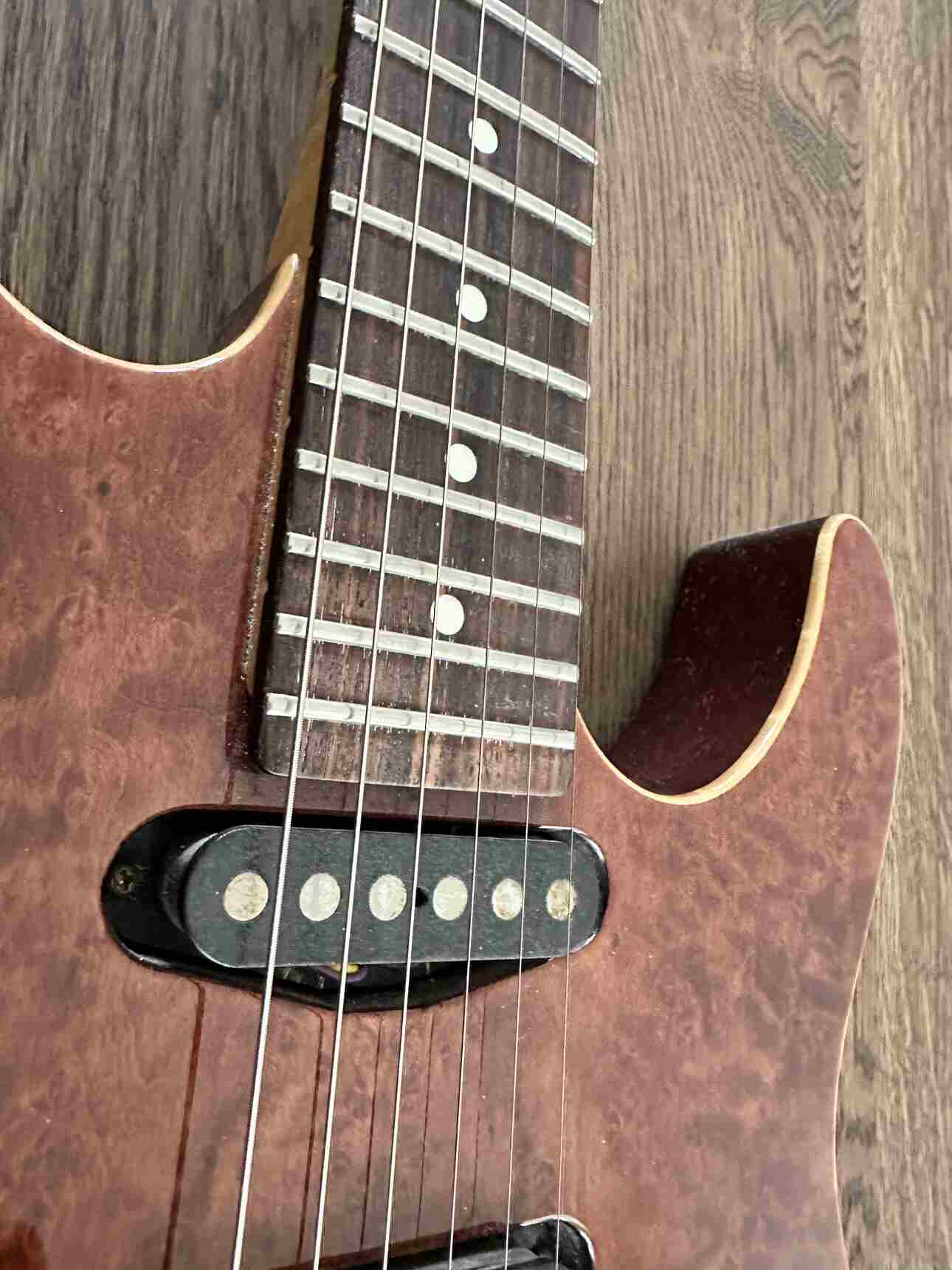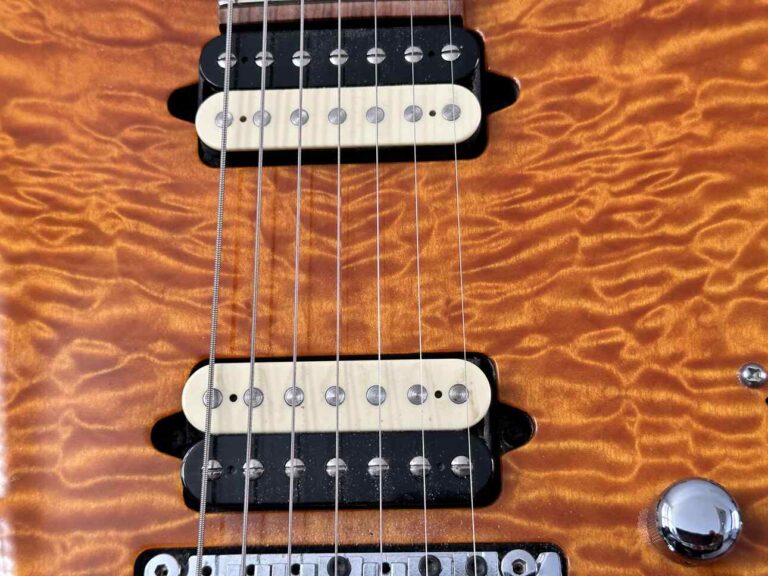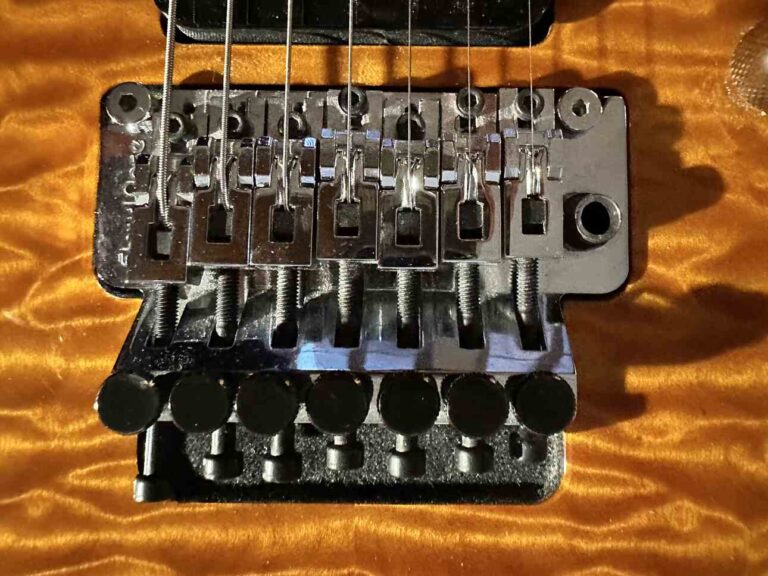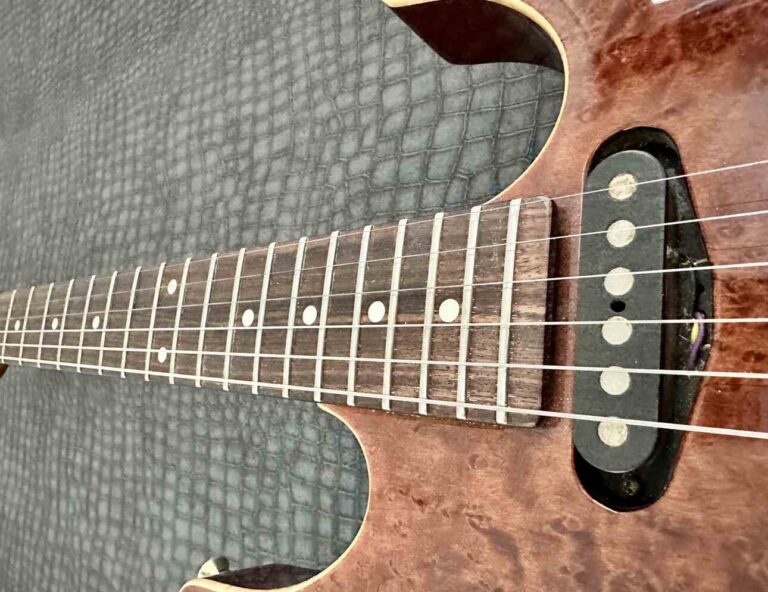Are Electric Guitar Pickups AC or DC? (Explained!)

Guitar pickups are electromagnetic devices that translate strings’ vibration into an electrical signal. This signal is alternating current (AC), created by the fluctuating magnetic field around the pickup as the guitar strings vibrate. The AC voltage is amplified to produce the electric guitar’s sound.
Some guitar components, like active pickups, may require direct current (DC) powered by a battery for their built-in preamps.
Key Takeaways
- Guitar pickups produce AC voltage, transforming string vibrations into electrical signals;
- String vibrations alter the magnetic field, generating an AC signal;
- Depending on the components, AC and DC can coexist in a guitar’s setup.
Nature of Guitar Pickup Signals
AC Versus DC Signals
AC signals change in voltage, while DC signals remain constant. Guitar strings create an AC signal as they vibrate and vary voltage over time. Magnetic pickups convert this mechanical energy into electrical voltage. The magnetic field induces current and creates an AC voltage signal.
How Pickups Convert Vibrations to Guitar Signals
Pickups in guitars are transducers that take the string’s vibration and turn it into electricity. When you strike a string, it moves at its own rate, making energy. The pickup’s job is to catch this energy and change it into electric power. This power goes to an amplifier and becomes the sound of the guitar.
Electric guitar pickups have a magnet that makes a field around the string. When the string moves, the field changes, making electricity flow. This flow is an alternating current (AC) that matches the string’s sound.
Key Points:
- Pickups change string vibrations to electric signals;
- The generated signals are AC because of their power shifts;
- Pickups use a magnet to change the field as the string moves, producing an AC signal.
Footnotes
Understanding Guitar Pickups
Fundamentals of Guitar Pickups
Magnetic guitar pickups are fundamental to electric guitars. The magnetic pickup, a coil around a magnet, is activated by playing a note. The vibrating string disturbs the pickups’ magnetic field. This induces an alternating current (AC) voltage in the coil.
There are several different pickups, each with a unique sound and characteristics.
Here are the most common types:
- Single-coil pickups: They produce a bright, clear tone but can be susceptible to picking up electromagnetic interference (EMI) from other electronic devices;
- Humbucker pickups use two wired coils to cancel out EMI. This results in a warmer, fuller sound.
Electric Guitar Circuits Basics
An electric guitar’s circuits include pickups, volume and tone controls, and a pickup selector switch. The pickups send their signal to these controls, adjusting the sound’s loudness and the high and low frequencies before it heads to the output jack.
The volume knob on a guitar is a potentiometer wired to the output. When you turn it, you change the resistance. This controls the signal’s strength to the amplifier.
The tone knob also uses resistance but shapes the sound. It filters the high frequencies through a capacitor. When you turn down the tone control, you filter out the high frequencies.
The pickup selector switch lets you choose between the bridge, middle, or neck pickup. Or a combination of two adjacent pickups.
Electrical Properties of Pickups
DC Resistance
DC resistance, measured at direct current in ohms, can impact the output and tone of your signal. It gives an idea of a pickup’s output level. Higher resistance values produce a stronger, brighter output. Lower values produce a more mellow tone.
Impedance and Pickup Inductance
Impedance and inductance matter for your guitar’s pickups. Impedance measures how the pickup resists AC, which the current guitar strings produce.
In contrast, inductance is the pickup’s power to hold energy in its magnetic field. This shapes how the pickup reacts to various tones. The level of inductance changes the output and frequency response and, therefore, the sound.
DC Resistance can impact
the output and tone of your signal
Measuring Pickup Output
You can test your guitar pickups with a multimeter. It helps you analyze the output and performance of your guitar pickups and understand your pickups’ DC resistance.
To check DC resistance:
- Set the multimeter to the lowest ohms setting;
- Connect the multimeter’s probes to the pickup leads – red to hot, black to ground;
- Read the resistance;
DC resistance is only part of your pickup’s story. Also, check the impedance and inductance to fully understand your pickup’s specifications.
Can you use both AC and DC voltage with guitar pickups?
I explained above how regular (passive) pickups work. Active pickups are a different matter. They have a preamp that needs a battery, usually 9 volts of DC power. This preamp boosts or changes the signal before it reaches the amp. But most passive pickups only need the AC from the strings.
In both cases, the guitar’s audio signal, which is eventually sent to the amplifier, is an alternating current (AC). It’s just that active pickups use DC for the preamp.
Frequently Asked Questions
What type of signal does a guitar pickup produce?
A guitar pickup sends out an analog AC signal. String vibrations change the magnetic field, leading to voltage changes. This makes a waveform that copies the string’s movement, turning it into an electrical audio signal representation.
What is the usual voltage from a guitar pickup?
A guitar pickup’s voltage varies with the pickup type and how hard you play the strings. It can be a few millivolts up to about 1 volt. Active pickups with preamps can hit several volts.
How does pickup voltage affect the signal chain?
The pickup voltage shapes the signal chain by setting the signal strength for effects and amps. More voltage means a stronger signal, making your guitar sound clearer.
Do guitar amps work with AC or DC from pickups?
Guitar amps are made for AC signals from pickups. They take the AC voltage from the pickups and amplify it. There’s no need to change it to DC; amps are built to handle the AC from your guitar.






